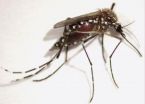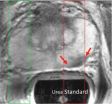(Press-News.org) RIVERSIDE, Calif. – Each year, dengue fever infects as many as 100 million people while yellow fever is responsible for about 30,000 deaths worldwide. Both diseases are spread by infected female Aedes aegypti mosquitoes, which require vertebrate blood to produce eggs. The blood feeding and the egg development are tightly linked to how the mosquito transmits the disease-causing virus.
Now a team of entomologists at the University of California, Riverside has identified a microRNA (a short ribonucleic acid molecule) in female Aedes aegypti mosquitoes that when deactivated disrupts the mosquito's blood digestion and egg development – a discovery that could help control the spread of not only dengue and yellow fever but potentially all vector-borne diseases.
MicroRNAs do not code for protein products but play powerful regulatory roles in development and cell growth; their mis-regulation leads to defects, including cancer. The researchers asked if microRNAs were involved in essential functions in female mosquitoes such as blood feeding and egg maturation. These functions are required not only for successful reproduction, but also serve as a foundation for the mosquito's ability to transmit pathogens of devastating human diseases.
In their experiments in the lab, the researchers were screening a number of microRNAs in female Aedes aegypti mosquitoes to study their behavior during blood feeding and reproduction, when they found one microRNA, "miR-275," was highly elevated during egg development.
Next, the researchers developed a method for specific deactivation of miR-275 in Aedes aegypti females and fed these mosquitoes with blood to analyze what effects occur when female mosquitoes no longer have this microRNA at their disposal.
They found that the blood these mosquitoes had fed on remained undigested in their guts. Further, the overall volume of the engorged blood was unusually large, suggesting that the mosquitoes' fluid excretory function had been impeded. The researchers also found that in these mosquitoes, egg development, whose success is dependent on blood digestion, was severely inhibited.
"Our finding is exciting because it gets to the very core of what a vector of diseases is all about," said Alexander Raikhel, a distinguished professor of entomology, whose lab led the study. "We can now knock down a series of events – starting with the digestion of blood and proceeding all the way to egg maturation – simply by eliminating this small molecule, miR-275. In tropical areas of the world, where dengue and yellow fever are often leading causes of hospitalization and death among adults and children, a reduction in the number of Aedes aegypti mosquitoes would be tremendously beneficial."
Study results appear this week in the online edition of the Proceedings of the National Academy of Sciences.
Next in this line of work, Raikhel's lab plans to focus on determining which genes miR-275 targets, what roles these genes play in blood digestion and egg development, and what mechanism underlies the activation and deactivation of miR-275.
Bart Bryant, the first author of the research paper and a postdoctoral researcher in Raikhel's lab, explained that the research team knocked down or "depleted" the miR-275 with an "antagomir" – a small synthetic RNA molecule that in this research study binds with miR-275, preventing it from doing its job of allowing blood digestion and egg development to proceed.
"We think our work has opened the door for exploring how microRNAs regulate critical physiological functions specific to vectors that transmit deadly disease pathogens," Bryant said.
INFORMATION:
The study was supported by a 10-year grant to Raikhel from the National Institutes of Health. Raikhel, a member of the National Academy of Sciences, and Bryant were joined in the study by Warren MacDonald, a graduate student in Raikhel's lab.
The University of California, Riverside (www.ucr.edu) is a doctoral research university, a living laboratory for groundbreaking exploration of issues critical to Inland Southern California, the state and communities around the world. Reflecting California's diverse culture, UCR's enrollment has exceeded 20,500 students. The campus will open a medical school in 2012 and has reached the heart of the Coachella Valley by way of the UCR Palm Desert Graduate Center. The campus has an annual statewide economic impact of more than $1 billion.
A broadcast studio with fiber cable to the AT&T Hollywood hub is available for live or taped interviews. To learn more, call (951) UCR-NEWS.
Discovery by UC Riverside entomologists could shrink dengue-spreading mosquito population
Alexander Raikhel's lab identifies a microRNA molecule that controls blood feeding and egg development in Aedes aegypti females
2010-12-04
ELSE PRESS RELEASES FROM THIS DATE:
E. coli outbreak in Connecticut caused by raw milk consumption
2010-12-04
Raw milk is consumed by an estimated 1-3 percent of the United States population. Raw milk and raw cheeses are responsible for almost 70 percent of reported dairy outbreaks. On July 16, 2008, the Connecticut Department of Public Health identified two unrelated children who had experienced hemolytic uremic syndrome after consuming raw milk from the same farm. The authors investigated the situation further and found more cases of people affected by raw milk from the same farm. The details of their study are chronicled in the Dec. 15 issue of Clinical Infectious Diseases, ...
NIH study suggests that early detection is possible for prion diseases
2010-12-04
A fast test to diagnose fatal brain conditions such as mad cow disease in cattle and Creutzfeldt-Jakob disease in humans could be on the horizon, according to a new study from National Institutes of Health scientists. Researchers at NIH's National Institute of Allergy and Infectious Diseases (NIAID) have developed a highly sensitive and rapid new method to detect and measure infectious agents called prions that cause these diseases.
"Although relatively rare in humans and other animals, prion diseases are devastating to those infected and can have huge economic impacts," ...
New discovery prevents symptoms of rare genetic disorder
2010-12-04
The research was led by Dr. Matthew Ellinwood, a veterinarian and animal science professor at Iowa State University, in collaboration with Dr. Patricia Dickson at the Harbor-UCLA Medical Center, with colleagues at the Iowa State College of Veterinary Medicine, the University of Tennessee, St. Louis University and the University of Pennsylvania. Their work was published in the AAAS journal Science Translational Medicine.
The research focused on a disorder called mucopolysaccharidosis type I, or MPS I, which is caused by the lack of a key enzyme that breaks down substances ...
Stigma deters those with alcohol disorders from seeking treatment
2010-12-04
November 30, 2010 -- Despite the existence of effective programs for treating alcohol dependencies and disorders, less than a quarter of people who are diagnosed actually seek treatment. In a recent study by Columbia University's Mailman School of Public Health researchers report that people diagnosed with alcoholism at some point in their lifetime were more than 60% less likely to seek treatment if they believed they would be stigmatized once their status is known.
This is the first study to address the underuse of alcohol services specifically with regard to alcohol-related ...
SomaLogic researchers describe revolutionary new approach to protein analysis and application to early diagnosis of lung cancer
2010-12-04
###
Gold, L., et al. (2010). “Aptamer-based multiplexed proteomic technology for biomarker discovery,” PLoS One. Available online at http://dx.plos.org/10.1371/journal.pone.0015004
Ostroff, R. et al. (2010). “Unlocking biomarker discovery: Large scale application of aptamer proteomic technology for early detection of lung cancer.” PLoS One. Available online at http://dx.plos.org/10.1371/journal.pone.0015003
About SomaLogic, Inc.
SomaLogic, Inc., is a privately held biomarker discovery and clinical proteomics company based in Boulder, Colorado. The company's mission ...
'Watchful waiting' has a new set of eyes
2010-12-04
A UCSF research collaboration with GE Healthcare has produced the first results in humans of a new technology that promises to rapidly assess the presence and aggressiveness of prostate tumors in real time, by imaging the tumor's metabolism.
This is the first time researchers have used this technology to conduct real-time metabolic imaging in human patients and represents a revolutionary approach to assessing the precise outlines of a tumor, its response to treatment and how quickly it is growing.
Data on the first four patients are being presented today at the Radiology ...
Iowa State, Ames Lab researchers fabricate more efficient polymer solar cells
2010-12-04
AMES, Iowa – Researchers from Iowa State University and the Ames Laboratory have developed a process capable of producing a thin and uniform light-absorbing layer on textured substrates that improves the efficiency of polymer solar cells by increasing light absorption.
"Our technology efficiently utilizes the light trapping scheme," said Sumit Chaudhary, an Iowa State assistant professor of electrical and computer engineering and an associate of the U.S. Department of Energy's Ames Laboratory. "And so solar cell efficiency improved by 20 percent."
Details of the fabrication ...
UCSB scientists report study of 'brain maps' for how humans reach
2010-12-04
(Santa Barbara, Calif.) –– A ballet dancer grasps her partner's hand to connect for a pas de deux. Later that night, in the dark, she reaches for her calf to massage a sore spot. Her brain is using different "maps" to plan for each of these movements, according to a new study at UC Santa Barbara.
In preparing for each of these reaching movements, the same part of the dancer's brain is activated, but it uses a different map to specify the action, according to the research. Planning to hold hands is based on her visual map of space. Her second plan, to reach for her calf, ...
Researchers discover a way to simultaneously desalinate water, produce hydrogen and treat wastewater
2010-12-04
DENVER (December 2, 2010) – Fresh water and reusable energy. Humans are on a constant hunt for a sustainable supply of both. Water purification requires a lot of energy, while utility companies need large amounts of water for energy production. Their goal is to find a low-energy-required treatment technology. Researchers from the University of Colorado Denver College of Engineering and Applied Science may have discovered an answer.
Last year, a study published in Environmental Science & Technology incorporated desalination into microbial fuel cells, a new technology ...
Spanish Oncology to establish a new standard treatment on breast cancer at early stages
2010-12-04
Madrid, 2 december 2010.- Spanish Oncology has established a new standard treatment for Breast Cancer at early stages thanks to the results of the study 9805/Target 0 funded by Spanish Breast Cancer Research Group (GEICAM) and sponsored by Sanofi Aventis.
More than thousand patients and 50 hospitals participated in the study, whose findings are reported in the latest issue of The New England Journal of Medicine. Results indicate that docentaxel during quimotherapy reduces the risk of recurrence by 32% in women with high-risk but node-negative, early stage breast cancer ...
LAST 30 PRESS RELEASES:
Eye for trouble: Automated counting for chromosome issues under the microscope
The vast majority of US rivers lack any protections from human activities, new research finds
Ultrasound-responsive in situ antigen "nanocatchers" open a new paradigm for personalized tumor immunotherapy
Environmental “superbugs” in our rivers and soils: new one health review warns of growing antimicrobial resistance crisis
Triple threat in greenhouse farming: how heavy metals, microplastics, and antibiotic resistance genes unite to challenge sustainable food production
Earthworms turn manure into a powerful tool against antibiotic resistance
AI turns water into an early warning network for hidden biological pollutants
Hidden hotspots on “green” plastics: biodegradable and conventional plastics shape very different antibiotic resistance risks in river microbiomes
Engineered biochar enzyme system clears toxic phenolic acids and restores pepper seed germination in continuous cropping soils
Retail therapy fail? Online shopping linked to stress, says study
How well-meaning allies can increase stress for marginalized people
Commercially viable biomanufacturing: designer yeast turns sugar into lucrative chemical 3-HP
Control valve discovered in gut’s plumbing system
George Mason University leads phase 2 clinical trial for pill to help maintain weight loss after GLP-1s
Hop to it: research from Shedd Aquarium tracks conch movement to set new conservation guidance
Weight loss drugs and bariatric surgery improve the body’s fat ‘balance:’ study
The Age of Fishes began with mass death
TB harnesses part of immune defense system to cause infection
Important new source of oxidation in the atmosphere found
A tug-of-war explains a decades-old question about how bacteria swim
Strengthened immune defense against cancer
Engineering the development of the pancreas
The Journal of Nuclear Medicine ahead-of-print tip sheet: Jan. 9, 2026
Mount Sinai researchers help create largest immune cell atlas of bone marrow in multiple myeloma patients
Why it is so hard to get started on an unpleasant task: Scientists identify a “motivation brake”
Body composition changes after bariatric surgery or treatment with GLP-1 receptor agonists
Targeted regulation of abortion providers laws and pregnancies conceived through fertility treatment
Press registration is now open for the 2026 ACMG Annual Clinical Genetics Meeting
Understanding sex-based differences and the role of bone morphogenetic protein signaling in Alzheimer’s disease
Breakthrough in thin-film electrolytes pushes solid oxide fuel cells forward
[Press-News.org] Discovery by UC Riverside entomologists could shrink dengue-spreading mosquito populationAlexander Raikhel's lab identifies a microRNA molecule that controls blood feeding and egg development in Aedes aegypti females


